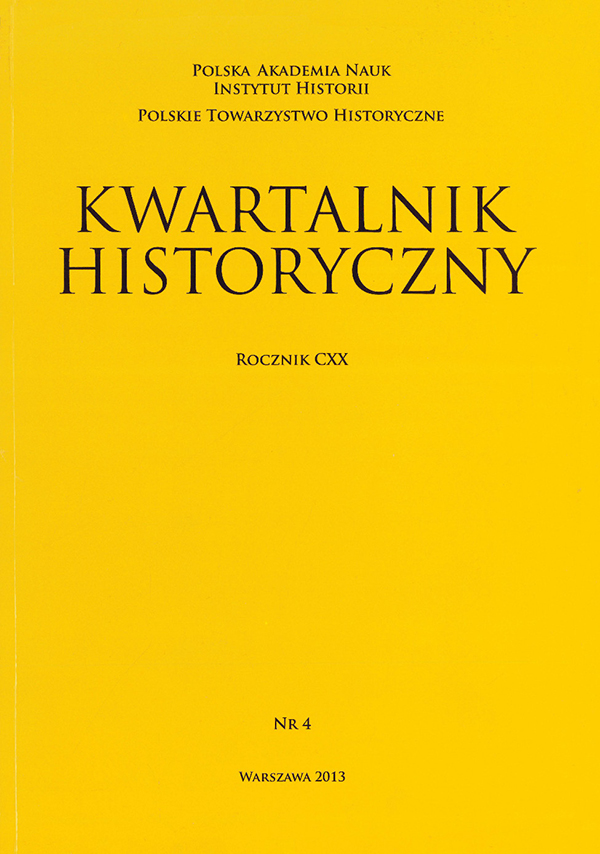Czy istniał feudalizm w Europie Środkowo-Wschodniej w średniowieczu?
DOI:
https://doi.org/10.12775/KH.2013.120.4.01Resumen
Did Feudalism Exist in East-Central Europe during the Middle Ages?
TheexistenceoffeudalismbasedonthefiefandorlanddominioninthekingdomsofPoland,BohemiaandHungaryduringtheMiddleAgesremainsdebatable. In turn, the destruction of the heretofore model of feudalism inWesternEuroperesultedinanegationofthedivisionofEuropeintofeudalandnon-feudal.Thereisnoneed,however,toresignfromtheconceptoffeudalismasananalytical category. The foundation of feudalism consisted of the landfief,whichemerged in connection with general growth of Western Europe inthe HighMiddle Ages. The concept of social scarcity explains a phenomenoncharacteristicforperiodsofgrowth, i.e.socialcontrolofaccesstopropertyenvisagedasstatussymbols. In the world of European knights during the High MiddleAgessocialscarcitywasrepresentedbyland.Accesstoitwascontrolledwiththeassistanceoffeudallaw. Therankofthevassalswasreinforcedby“culturalcapital”specific for them and concentrated on rivalry and maximum efforts.
It is possible to speak about the reception of feudal law transferred from Germany to Moravia, Bohemia, and Silesia. Quite possibly, some sort of quasi-feudalism existed in Hungary. In Bohemia and Moravia, starting with the twelfth-thirteenth century,thereemergedaratherconspicuousgroupofministeriales;asimilarsituation also occurred in Silesia. Ministeriales could have also existed in twelfth-century Hungary. In Poland (with the exception of Silesia) there are no noticeable traces of ministeriales and certain elements of feudal law were probably used only to a slightextent.
In the majority of East-Central Europe knights preferred full land ownership to conditional ownership. Processes of social exchange in connection with relatively weak growth during the High Middle Ages were incapable of moulding new communities sharing the feudal ethos of rivalry and competition.
Descargas
Publicado
Cómo citar
Número
Sección
Stats
Number of views and downloads: 833
Number of citations: 0



